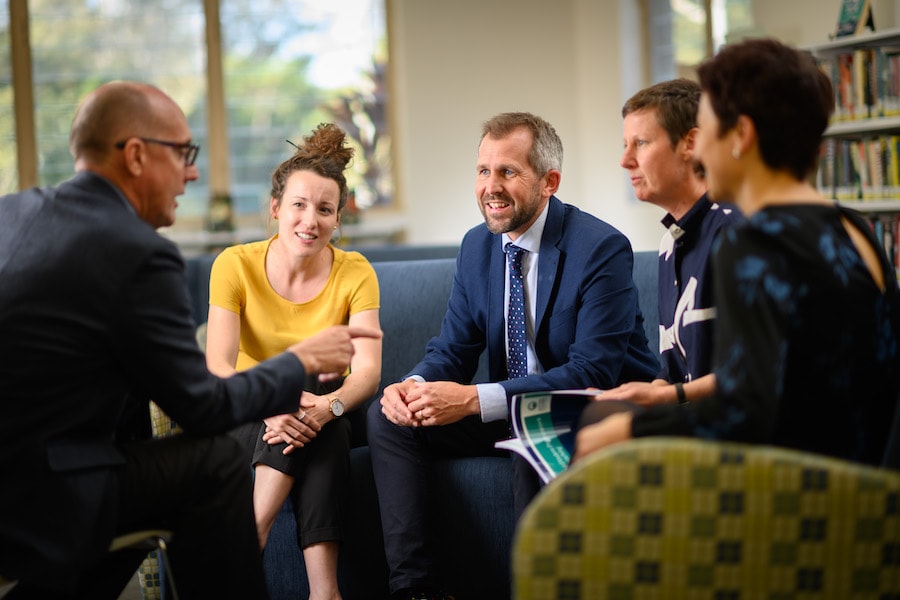Last week, the new school term began and 1,300 students joined their classes at 8:35am on Tuesday morning, with their teachers well prepared and enthusiastically welcoming them to a new term of learning. But, that is where the comparisons with ‘normal’ ended. The start of Term 2 was far from normal at any school in Australia or, for that matter, in most countries around the world. Within just a few weeks, the nature of teaching and learning has been flipped, nationally and internationally.
Historically, education is notoriously slow to change. In fact, schools and classrooms function in the 21st century in a very similar way to how they did in the 19th Century. What has happened in schools in the last few weeks has been extraordinary in every way. Schools have had to move to a completely new method of working, one which has meant that all students are learning at home. As I walked around the campus on Tuesday, there was an eerie silence about the place. The oval and grounds looked magnificent, classrooms neat and tidy and playgrounds ready to be climbed all over. But there was something missing: 1,300 students and 400 staff. A school is a very strange place when it is empty.
But just because the campus was empty did not mean that students and staff were idle. Quite the contrary in fact. As I sat in my office, I could see 1,300 students logged in and ‘online’ with their teachers. Some were video conferencing on Webex, others watching pre-recorded instructional videos. MyFlinders class pages and Google Classroom pages were full of instructions, learning guides, welcome notes and supporting resources. I am delighted to observe that the unprecedented transition from face-to-face classroom teaching to remote online learning has been swift and expertly mastered by the teachers and students at Flinders.
At the end of last term, with the prediction of a likely move to online learning for Term 2, staff began the monumental task of moving to a remote model of teaching and learning whilst continuing to deliver high quality face-to-face teaching in their classrooms. The decision to move to remote teaching mode for five days at the end of term was incredibly valuable for testing apps, setting up systems and policies, and giving staff and students an idea of what to expect in a longer-term remote model. Teaching teams collaborated and shared best practice and expertise. They engaged in research and accessed professional development to up-skill in key digital learning tools. Feedback from students at the end of this was very positive and it was clear that Flinders was going to be well prepared for an extended ‘shut-down’.
The Easter break was unlike any mid-term break for all Australians, but particularly for teachers at Flinders. With the prospect of at least five weeks in remote mode, teachers have had to go about the considerable task of re-writing curriculum, assessment and lesson plans. New ways of delivering familiar content have been developed and teachers have continued to upskill in various digital tools to enable effective delivery of the curriculum.
The challenge for all staff is how to continue to deliver high quality teaching and learning in this new remote environment. As Jared Cooney-Horvath recently said to me, “If educating our children were as simple as posting videos online, then YouTube would have already supplanted traditional schools, and students would be thriving in this new environment…but it isn’t, it hasn’t, and they’re not.”
In an article I wrote last year I talked about how we are attempting to future-proof our students for success in an uncertain world. Where the speed at which our world is being transformed by advancements in new technologies and intelligence threatens to leave behind people that don’t have the skills and competencies to keep up with these changes. It is widely recognised that these skills include being innovative, collaborative, proactive and responsive to the changes taking place. In the last few weeks the teaching staff at Flinders have demonstrated these skills in buckets. They have shown that that they themselves model the very attributes that research shows are important for the next generation of citizens.
It is safe to say that the learning curve for our teachers has been steep, and remote learning continues to present challenges that, as a community, I am confident we can overcome. But I can think of no one better to guide our students through this difficult time in history than our highly committed and highly skilled teachers at Flinders.
Edward Wright | Head of Teaching and Learning
Image caption: Please note, this photograph was taken prior to COVID-19 social distancing measures being introduced.

